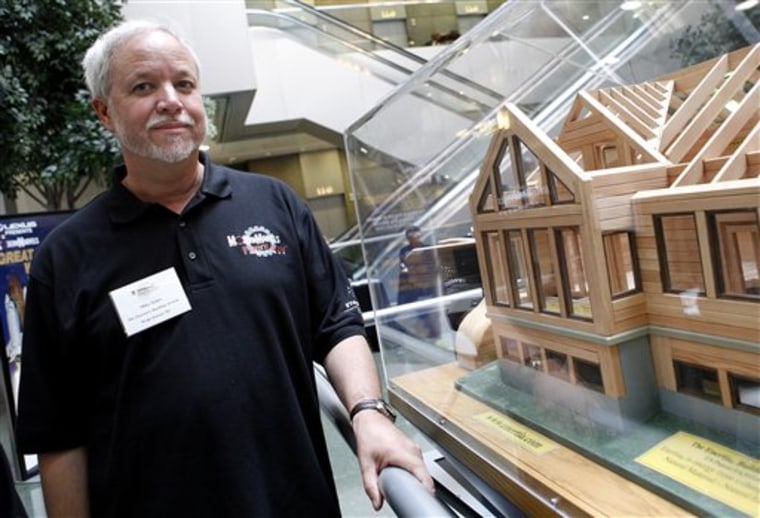Mike Sykes has spent the past 22 years inventing, refining and patenting a way to build homes in a more environmentally friendly way. His invention, the Enertia Building System, earned him U.S. Patent No. 6933016 B1.
Sykes, 57, also won the 2007 History Channel Modern Marvels Invent Now contest — and the $25,000 that goes with it. An exhibit featuring the Modern Marvels finalists is on display at the U.S. patent office's headquarters in Alexandria, Va., through the end of June.
The Enertia house uses the warmth of the sun and the coolness of the ground below the house to regulate the temperature inside.
"It's a house design that mimics that greenhouse effect that we see in the Earth's atmosphere," Sykes said. "The house makes its own weather."
No major homebuilders have yet shown interest in Enertia but Sykes' goal is to usher the technology into mass production.
His passion follows the trend among inventors in the past two years — a focus on safety-oriented, medical, computer technology and environmentally-friendly innovations, according to Jeffrey Dollinger, chief development officer of the National Inventors Hall of Fame Foundation. Recent hall of fame inductees include Ethernet inventor Bob Metcalfe and Vint Cerf, one of the key architects of the Internet.
vmed1p.jpg)
The high profiles of technology pioneers could be prodding more people than ever before to seek patents, as seen in the number of applications arriving at the U.S. Patent and Trademark Office. Last year, the office received 443,652 applications, spokeswoman Jennifer Rankin Byrne said, adding to a backlog that is expected to grow to 800,000 by the end of the year.
Sykes was one of about 150 inventors at a recent USPTO conference, part of a wider outreach effort led by John Calvert, administrator of the patent office's Inventors Assistance Program and a former examiner. The office is educating inventors through clubs, universities and even high schools, to offer guidance on how to navigate the application process.
The complexity of applying for a patent is just one of the many obstacles inventors face. Ideas innovative enough to earn a patent can be the result of years, or even decades, of tinkering, testing and worrying.
Among the problems some of the inventors face: How to design a manufacturing process from scratch, how to enter a market to compete with a multibillion-dollar corporation or how best to get legal protection for their invention.
"A successful inventor — the ingenuity and knowledge base is almost secondary. The most common trait of an inventor is perseverance," said Dollinger. "They don't give up. They may not have hit big in the marketplace but they expect to."
